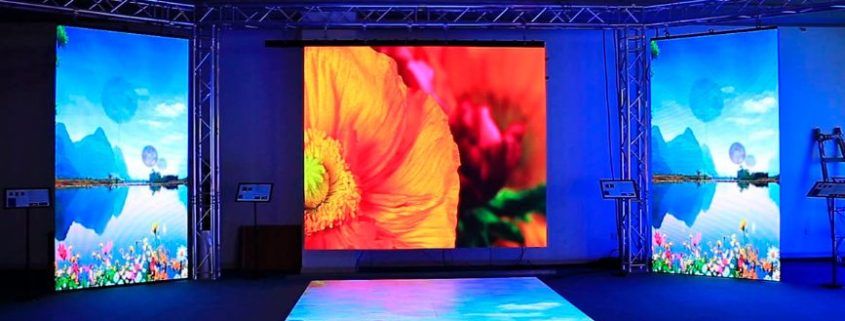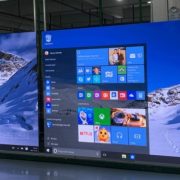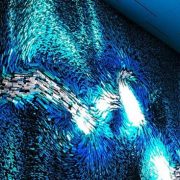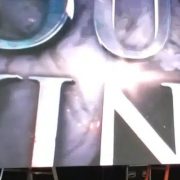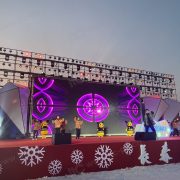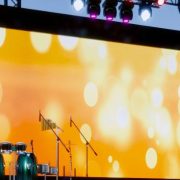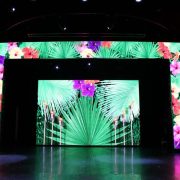Designing with Stage LED Screen Mockup Essentials
In the realm of stage design, the use of mockups is invaluable, serving as a blueprint for the final setup. Specifically, a stage LED screen mockup plays a crucial role in the planning process, allowing designers to visualize the integration of dynamic LED screens into the overall stage environment. These mockups provide a realistic preview of how LED screens will enhance the visual appeal of the stage, enabling adjustments and refinements before actual implementation, thus ensuring a seamless blend of technology and design in live performances.
Finding Stage LED Screen Mockup Free Downloads
In the intricate world of stage design, the visualization of concepts before their physical realization is paramount. This is where the utility of a stage LED screen mockup becomes undeniable. These digital mockups serve as a pivotal tool, allowing designers to experiment with various visual elements and screen placements without the constraints of time and resources that physical setups entail. Particularly, the availability of free mockup downloads has democratized the design process, making it accessible to a broader spectrum of creatives. This comprehensive guide delves into the nuances of finding high-quality stage LED screen mockups for free, underscoring the intrinsic value these resources bring to the table in the realm of stage design.
Navigating the Digital Landscape for Free Mockups
The digital age has ushered in a plethora of resources for designers, with numerous websites dedicated to providing free mockups, including those for stage LED screens. Platforms such as Behance, Freepik, and Adobe Stock offer a wide array of mockup templates created by talented designers worldwide. These platforms are treasure troves for stage designers seeking to bring their visions to life with LED screens, providing mockups that range from simplistic to intricate designs, catering to various thematic and spatial requirements.
When searching for the perfect mockup, employing specific keywords such as “stage LED screen mockup free” or “LED screen stage design mockup” can yield more targeted results. Additionally, engaging with online communities of stage designers and event planners on forums and social media groups can lead to recommendations and shared resources, further expanding the pool of available mockups.
The Value of Free Mockup Resources in Stage Design
The significance of free mockup resources extends beyond mere cost savings; they are a catalyst for creativity and innovation in stage design. These mockups provide a risk-free environment for designers to explore different configurations of LED screens on stages, enabling a trial-and-error approach that fosters creative freedom. This iterative process is crucial in achieving a design that not only meets the aesthetic and functional requirements of the event but also ensures the feasibility of the setup.
Moreover, free mockups can significantly streamline the client presentation process. By presenting a visual representation of how the LED screens will integrate with the stage setup, designers can more effectively communicate their ideas, setting clear expectations and facilitating more informed decision-making. This visual communication tool can bridge the gap between concept and reality, helping clients visualize the transformative impact of LED screens on their event’s ambiance.
Ensuring Quality in Free Mockups
While the internet abounds with free resources, maintaining a discerning eye for quality is essential. High-quality mockups should offer a realistic representation of LED screens, with accurate proportions, scalable dimensions, and customizable elements that allow for a tailored fit to the specific stage design. Attention to detail in the mockup, such as the screen’s texture, lighting effects, and the interplay with other stage elements, can significantly affect the overall realism and effectiveness of the mockup.
It’s also advisable to consider the mockup’s format and compatibility with design software commonly used in stage design. Mockups available in formats compatible with Adobe Photoshop, Illustrator, or Sketch, for example, provide more flexibility, allowing designers to seamlessly integrate the mockup into their existing workflow.
The quest for the perfect stage LED screen mockup free download is more than a search for a cost-effective design tool; it’s a journey towards unlocking the full potential of LED technology in enhancing stage presentations. Free mockups not only democratize the design process but also serve as a springboard for creativity, enabling designers to experiment, iterate, and communicate their visions with unprecedented clarity and efficiency. As the digital landscape continues to evolve, the abundance of high-quality free resources will undoubtedly continue to shape the future of stage design, making the spectacular integration of LED screens an accessible reality for events of all scales.
Advantages of Using Stage LED Screen Mockup
The integration of LED screens into stage design has revolutionized the way audiences experience live performances, events, and presentations. As this technology continues to evolve, the use of stage LED screen mockups has become an invaluable tool in the planning and creative process. These mockups offer a virtual blueprint for designers, allowing for a multitude of advantages in terms of visualization, planning, and creativity. This exploration delves deep into how mockups facilitate creative experimentation and underscore the benefits of visualizing stage backgrounds before their actual implementation.
Facilitating Creative Experimentation with Stage LED Screen Mockups
Stage LED screen mockups are more than just a planning tool; they are a canvas for creative experimentation. These digital representations allow designers to explore a vast array of visual concepts without the constraints of physical setup or the immediate costs associated with trial and error on actual LED screens. Here’s how mockups serve as a pivotal tool for creativity:
- Risk-Free Exploration: Mockups provide a safe environment to test different visual themes, animations, and content sequences. Designers can daringly explore creative concepts without the fear of wasting resources or facing logistical challenges associated with real-time changes.
- Realistic Visualization: With advancements in mockup technology, stage LED screen designs can be visualized with high fidelity, offering a realistic representation of how graphics and videos will appear on actual screens. This level of detail is crucial for assessing the visual impact of design choices.
- Iterative Design Process: The ease with which modifications can be made in mockups supports an iterative design process. Designers can refine and tweak visuals based on feedback or new ideas, fostering a culture of continuous improvement.
- Integration with Stage Elements: Mockups enable designers to consider the interplay between LED screens and other stage elements, such as lighting, set pieces, and performer movements. This holistic view ensures that the LED content complements rather than competes with the overall stage design.
Benefits of Visualizing Stage Backgrounds Before Actual Implementation
Visualizing stage backgrounds using LED screen mockups before actual implementation carries several benefits, significantly impacting the final outcome of events. These benefits highlight the practical and strategic value of mockups in the staging process:
- Enhanced Planning and Coordination: Mockups serve as a visual reference point for all team members involved in the staging process, including designers, technicians, and directors. This shared vision enhances coordination, ensuring that all elements of the production align seamlessly.
- Cost-Effectiveness: By finalizing designs in the mockup phase, production teams can avoid costly changes and adjustments during the actual setup. This preemptive approach saves on resources and reduces the likelihood of last-minute technical issues.
- Audience Engagement Insights: Visualizing the stage setup beforehand allows designers to consider the audience’s perspective, tailoring the visual experience to maximize engagement and impact. Mockups can help identify potential visibility issues or distractions, ensuring a captivating experience for all attendees.
- Sponsorship and Marketing Opportunities: Stage LED screen mockups can be used in pitches and presentations to potential sponsors or for marketing purposes. These visualizations can showcase the event’s innovative approach and the integration of sponsor content, providing a tangible vision of the proposed outcome.
- Technical Preparedness: Mockups enable technical teams to plan for the specific requirements of the LED content, including resolution, aspect ratios, and connectivity issues. This preparedness ensures a smooth implementation phase, minimizing technical glitches that could detract from the audience experience.
- Creative Confidence: With a detailed mockup, creative teams can move forward with confidence, knowing that their vision has been thoroughly vetted and optimized for the best possible audience reception. This confidence can inspire more ambitious and innovative stage designs.
The use of stage LED screen mockups represents a convergence of technology and creativity, offering an array of advantages that extend beyond mere visualization. These digital blueprints facilitate a level of creative experimentation, planning, and coordination that was previously unattainable, ensuring that the final implementation of stage backgrounds not only meets but exceeds expectations. As technology continues to advance, the role of mockups in stage design will undoubtedly grow, further enhancing the dynamic interplay between visual creativity and technical execution.
The Process of Stage LED Screen Mockup Download
In the dynamic realm of stage design, the advent of LED technology has revolutionized the way designers conceptualize and visualize their ideas. A stage LED screen mockup serves as a pivotal tool in this creative process, offering a digital canvas to experiment with various visual elements and screen configurations. This comprehensive guide aims to demystify the process of downloading and utilizing stage LED screen mockups, ensuring that designers can seamlessly integrate these resources into their workflow. Additionally, we’ll spotlight some of the most user-friendly platforms that provide access to a wide array of mockup files, catering to the diverse needs of stage design professionals.
Step 1: Identifying the Right Mockup for Your Project
The first step in the process involves identifying a mockup that aligns with the specific requirements of your stage design project. Consider factors such as the size and shape of the LED screen, the complexity of the stage setup, and the thematic elements of the event. Utilize targeted keywords like “stage LED screen mockup” in your search to filter results more effectively.
Step 2: Choosing a Reliable Platform
Once you have a clear idea of the type of mockup you need, the next step is to choose a platform that offers high-quality mockup files. Websites like Behance, Freepik, and Adobe Stock are renowned for their extensive libraries of mockups created by talented designers from around the globe. These platforms often categorize mockups based on themes, usage, and file types, making it easier for you to find the perfect match for your project.
Step 3: Reviewing Mockup Details
Before proceeding with the download, it’s crucial to review the details of the mockup. Pay close attention to the file format, resolution, and customization options. A high-quality stage LED screen mockup should offer a realistic representation of LED screens with adjustable elements to fit your design needs. Ensure that the mockup is compatible with the design software you intend to use, such as Adobe Photoshop or Illustrator.
Step 4: Downloading the Mockup
Upon selecting the ideal mockup, follow the platform’s instructions for downloading the file. Most user-friendly platforms streamline this process, requiring only a few clicks. Some websites might require you to create an account or attribute the original designer, so be sure to comply with the terms of use.
Step 5: Customizing the Mockup
With the mockup file downloaded, the next phase involves customization. Import the mockup into your preferred design software and begin the process of integrating your visual elements. This might include adding images, text, and other graphical elements to the LED screen within the mockup. Take advantage of layering and editing tools to adjust colors, lighting, and other aspects to achieve the desired look.
Step 6: Integrating the Mockup into Your Design Presentation
Once you’ve customized the mockup to your satisfaction, it’s time to integrate it into your overall stage design presentation. This might involve placing the mockup within a larger layout that includes floor plans, lighting schemes, and other stage elements. The mockup serves as a visual centerpiece, illustrating how the LED screen will enhance the stage setup.
Highlighting User-Friendly Platforms for Mockup Access
To streamline your search for the perfect stage LED screen mockup, here are some user-friendly platforms known for their quality and variety:
- Behance: An Adobe-owned platform that showcases creative work, including an array of free and premium mockups.
- Freepik: Offers a vast collection of graphic resources, including mockups, with both free and premium options available.
- Adobe Stock: Provides high-quality, professional mockups, including those for stage LED screens, with seamless integration into Adobe Creative Cloud applications.
- Unsplash: While primarily a photography platform, Unsplash offers high-resolution images that can serve as backdrops for your mockup presentations.
- Mockup World: Specializes in mockups of all kinds, including those suitable for stage designs, with easy navigation and free downloads.
The process of downloading and utilizing a stage LED screen mockup is a journey that blends creativity with technical precision. By following this step-by-step guide and leveraging the resources available on user-friendly platforms, designers can effectively bring their stage concepts to life. A well-chosen mockup not only enhances the visual appeal of a stage design presentation but also serves as a critical tool in communicating ideas to clients, collaborators, and technical teams. As the digital landscape continues to evolve, the role of mockups in the design process will undoubtedly grow, further enriching the world of stage design with endless possibilities.
What are the Stage Background Screen Price Factors
In the intricate world of stage design, the allure of LED screens lies in their ability to transform spaces into immersive environments. However, the decision to incorporate an LED screen into a stage setup is often met with budgetary considerations. This is where the utility of a stage LED screen mockup becomes invaluable. By providing a realistic visualization of the intended design, mockups play a crucial role in financial planning and decision-making. This comprehensive exploration delves into the various factors that influence the price of stage background screens and how leveraging mockups can aid in navigating these financial waters, ensuring that the final design not only captivates the audience but also aligns with budgetary constraints.
The Role of Mockups in Budget Planning
The initial step in understanding the financial implications of incorporating an LED screen into a stage design is to utilize a stage LED screen mockup. Mockups serve as a cost-effective tool to experiment with different screen sizes, configurations, and placements without incurring the expenses associated with physical trials. By visualizing the end result through a mockup, designers and financial planners can assess the visual impact of various screen options and make informed decisions that balance aesthetic appeal with financial viability.
Mockups also allow for the exploration of alternative design solutions that may be more cost-effective. For instance, a mockup might reveal that a smaller screen, strategically placed, could achieve the desired visual effect without the need for a larger, more expensive setup. This level of pre-visualization can lead to significant cost savings and more efficient use of resources.
Factors Influencing Stage Background Screen Prices
Several key factors contribute to the cost of stage background LED screens, each playing a role in the overall budget for a stage design project:
- Screen Size and Resolution: The dimensions and pixel density of an LED screen are primary determinants of its price. Larger screens with higher resolutions offer superior image quality but come at a higher cost. Mockups can help in determining the minimum size and resolution required to achieve the desired visual effect, potentially reducing costs.
- LED Technology: The type of LED technology used (such as SMD or DIP LEDs) affects both the performance and price of the screen. Advanced technologies that offer better brightness, color accuracy, and energy efficiency typically command higher prices. Through mockups, designers can evaluate whether the benefits of advanced technologies justify their additional cost for a specific project.
- Configuration and Complexity: The complexity of the screen setup, including curved or flexible configurations, can impact the price. Complex configurations may require additional structural support and specialized installation, increasing costs. Mockups allow for the exploration of simpler configurations that still meet design goals.
- Installation and Maintenance: The cost of installing and maintaining an LED screen is an important consideration. Factors such as the ease of access for maintenance, the need for specialized installation teams, and the frequency of required maintenance can all influence long-term costs. Mockups can aid in selecting screen systems that are easier and more cost-effective to install and maintain.
- Durability and Weather Resistance: For outdoor stages, the durability and weather resistance of an LED screen are crucial. Screens designed to withstand adverse weather conditions and prolonged outdoor use are more expensive but offer greater longevity. Mockups can help in assessing the necessity of these features based on the intended use and location of the screen.
The Impact of LED Screen Choices on Overall Stage Design Costs
The selection of an LED screen for a stage background is a decision that reverberates through the entire budget of a stage design project. Opting for a high-end screen with superior performance characteristics can elevate the visual experience but may necessitate compromises in other areas of the design due to budget constraints. Conversely, choosing a more economical screen might limit the visual impact but allow for greater investment in other design elements, such as lighting, sound, and set design.
Mockups play a pivotal role in navigating these trade-offs. By providing a visual representation of how different screen choices affect the overall design, mockups enable designers and financial planners to make informed decisions that align with both creative and financial objectives. This holistic approach to budget planning ensures that the final stage design is not only visually stunning but also financially sustainable.
Understanding the price factors associated with stage background LED screens is essential for effective budget management in stage design. The strategic use of stage LED screen mockups offers a powerful tool for visualizing the impact of various screen options, facilitating informed decision-making that balances aesthetic aspirations with financial realities. By considering the size, resolution, technology, configuration, installation, maintenance, and durability of LED screens, designers can optimize their choices to enhance the stage design while adhering to budgetary constraints. In doing so, mockups become not just a design tool but a financial planning asset, guiding the creation of mesmerizing stage environments that captivate audiences without compromising fiscal responsibility.
Stage LED Screen Mockup: Incorporating Stage Background LED Screens in Mockups
In the realm of stage design, the integration of LED screens has become a staple for creating dynamic and visually captivating environments. The advent of stage LED screen mockups has significantly enhanced the design process, allowing designers to experiment with various configurations and visual effects before the actual setup. This detailed exploration delves into the critical importance of realistic LED screen representation in mockups and outlines effective techniques for integrating these screens into stage mockups, ensuring that the envisioned design aligns with the practical realities of stage production.
The Significance of Realistic Representation in Mockups
The essence of utilizing a stage LED screen mockup lies in its ability to provide a faithful representation of how the actual LED screen will appear and function within the context of the stage design. This realistic portrayal is paramount for several reasons:
- Accurate Visualization: A mockup that closely mimics the real-life appearance and behavior of an LED screen enables designers and stakeholders to visualize the final stage setup accurately. This clarity is crucial for making informed decisions regarding screen size, resolution, placement, and content.
- Technical Feasibility: Realistic mockups help in assessing the technical feasibility of the proposed design, highlighting potential challenges in screen installation, visibility, and integration with other stage elements. This foresight can prevent costly modifications and technical issues during the actual setup.
- Client Presentations: For designers, the ability to present clients with a mockup that accurately reflects the proposed stage design, including the LED screens, is invaluable. It sets clear expectations, facilitates approval processes, and enhances client confidence in the design proposal.
Techniques for Integrating LED Screens into Stage Mockups
Effectively incorporating LED screens into stage mockups involves a blend of technical knowledge and creative design skills. The following techniques can help achieve a realistic and impactful representation:
- High-Resolution Screen Textures: Utilize high-resolution textures for the LED screen in the mockup to replicate the screen’s clarity and vibrancy. This includes simulating the pixel density and luminosity to reflect how content will appear under various lighting conditions.
- Content Simulation: Incorporate actual or simulated content into the LED screen within the mockup. This could range from static images to dynamic video clips, providing a more comprehensive view of how the screen will enhance the stage’s visual appeal.
- Perspective and Scaling: Pay careful attention to the perspective and scaling of the LED screen within the mockup. The screen should be proportionate to other stage elements and accurately positioned to reflect viewing angles and audience sightlines.
- Lighting and Environmental Effects: Simulate the interaction between the LED screen and stage lighting, as well as environmental factors such as ambient light. This can help in evaluating the screen’s visibility and impact under different conditions.
- Interactivity and Dynamic Elements: If the stage design involves interactive or dynamic LED screen elements, such as responsive visuals or integration with stage movements, simulate these aspects in the mockup to provide a comprehensive preview of the interactive experience.
- Software and Tools: Leverage advanced design software and tools that offer specialized features for creating realistic mockups. Programs like Adobe Photoshop, After Effects, and 3D modeling software can provide the necessary capabilities for detailed mockup creation.
- Feedback and Iteration: Use the mockup as a collaborative tool, gathering feedback from team members, clients, and technical experts. This iterative process can lead to refinements that enhance the realism and effectiveness of the LED screen representation.
The incorporation of stage background LED screens in mockups is a critical step in the stage design process, bridging the gap between conceptualization and realization. By ensuring a realistic representation of LED screens in mockups, designers can accurately visualize the final stage setup, assess technical feasibility, and communicate their vision effectively to clients and stakeholders. Employing the right techniques and tools for integrating LED screens into mockups can significantly enhance the design process, leading to stage environments that are not only visually stunning but also technically sound and aligned with the project’s goals and constraints. As technology and design tools continue to evolve, the potential for creating ever more realistic and impactful mockups will undoubtedly expand, further elevating the art and science of stage design.
Stage LED Screen Mockup: Utilizing Digital Display Mockup Tools
In the contemporary landscape of stage design, the integration of digital displays, particularly LED screens, has become a cornerstone for creating immersive and dynamic visual experiences. The advent of digital display mockup tools has significantly streamlined the design process, enabling designers to conceptualize, iterate, and communicate their visions with unprecedented precision and efficiency. This comprehensive exploration delves into the realm of digital tools and software specifically tailored for crafting LED screen mockups, highlighting the myriad benefits these digital solutions offer for fostering collaboration and facilitating constructive feedback in the stage design process.
Digital Tools and Software for LED Screen Mockups
The creation of a stage LED screen mockup is a nuanced process that demands a blend of artistic vision and technical acumen. Fortunately, a plethora of digital tools and software has emerged, catering to the diverse needs of stage designers. These tools range from graphic design software to specialized mockup and 3D modeling applications, each offering unique features and capabilities:
- Adobe Photoshop: Renowned for its versatility, Photoshop allows designers to create detailed LED screen mockups with layers, textures, and lighting effects, providing a realistic representation of how the screen will appear on stage.
- Adobe After Effects: Ideal for simulating dynamic content on LED screens, After Effects enables designers to incorporate motion graphics and video elements into their mockups, offering a glimpse into the screen’s interactive potential.
- SketchUp: This 3D modeling software is particularly useful for visualizing the spatial aspects of stage design, including the placement and scaling of LED screens within the overall stage setup.
- Blender: As a comprehensive 3D creation suite, Blender supports the creation of intricate mockups that include LED screens as part of complex stage designs, complete with realistic textures, lighting, and environmental effects.
- Cinema 4D: Favored for its powerful 3D modeling and animation capabilities, Cinema 4D allows designers to create highly detailed and dynamic mockups of stage designs featuring LED screens.
- Mockup World: Offering a collection of pre-made mockup templates, including those for digital displays, Mockup World provides a quick and accessible solution for designers seeking to visualize LED screens within their stage designs.
Advantages of Digital Mockups in Stage Design
The utilization of digital display mockup tools in the stage design process brings forth a multitude of advantages, enhancing both the creative and collaborative aspects of project development:
- Realistic Visualization: Digital mockups enable designers to create highly realistic representations of LED screens within the stage environment, complete with accurate dimensions, resolutions, and content. This level of detail aids in making informed design decisions and identifying potential challenges early in the process.
- Iterative Design: Digital tools facilitate rapid iteration, allowing designers to experiment with different LED screen configurations, content types, and visual effects with ease. This flexibility encourages creative exploration and leads to more refined and impactful stage designs.
- Enhanced Collaboration: Digital mockups serve as a central point of reference for all project stakeholders, including designers, clients, technical teams, and performers. By providing a clear and detailed visual representation, digital mockups foster effective communication and collaboration, ensuring that all parties are aligned with the design vision.
- Efficient Feedback Loop: The digital format of mockups allows for easy sharing and dissemination, enabling stakeholders to provide timely feedback from anywhere in the world. This accessibility accelerates the feedback loop, facilitating swift adjustments and consensus-building.
- Cost-Effectiveness: By enabling thorough pre-visualization, digital mockups help in identifying potential issues and design alterations before any physical construction or installation begins, thereby reducing the likelihood of costly last-minute changes.
The integration of digital display mockup tools into the stage design workflow represents a significant advancement in the field, marrying creativity with technology to elevate the visual storytelling potential of stage productions. By leveraging these digital solutions, designers can create compelling and accurate LED screen mockups that not only enhance the aesthetic appeal of stage designs but also streamline the collaborative process, ensuring that the final outcome resonates with audiences and aligns with the project’s objectives. As technology continues to evolve, the capabilities of digital mockup tools will undoubtedly expand, further empowering designers to push the boundaries of what is possible in stage design.

As the founder and leading expert of Shine LED Display, I, Ponsent Wu, bring over a decade of specialized experience in the LED display industry. My brand is dedicated to providing top-tier LED display solutions, ranging from high-definition screens for commercial use to customized installations for various events and projects. At Shine LED Display, we pride ourselves on offering a comprehensive service that includes design, configuration, installation, and expert troubleshooting. Whether you’re looking to enhance your business with a vibrant advertising display, create an unforgettable event with dynamic visuals, or have specific questions and needs regarding LED technology, I am here to ensure your vision is brilliantly realized. For any inquiries or to discuss your LED display needs, don’t hesitate to contact me at any time. Your satisfaction is the beacon that guides us at Shine LED Display.

